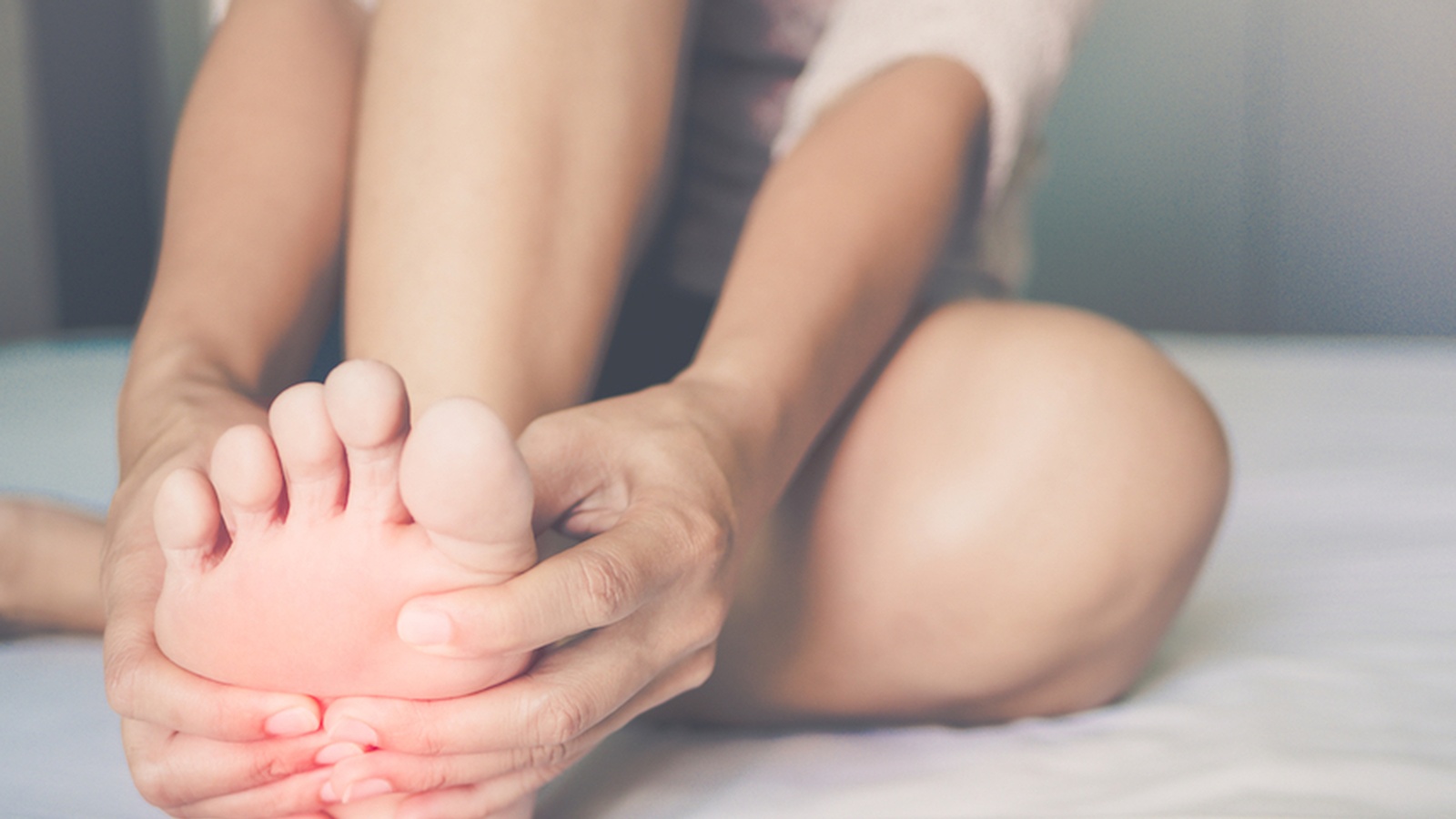Leg Cramps, Muscle Spasms & Cramping
A muscle cramp is most often regarded as a sudden and involuntary contraction or spasm of one or more of your muscles. While any muscle or muscle group can be affected, the muscles of the lower leg and foot are most commonly prone to cramping.
You may be able to see or feel a hard lump of muscle or tissue beneath the skin where the pain is isolated. Muscle cramping and spasms can be caused by a variety of factors and in most cases, they are generally harmless and will usually resolve itself or can be treated with simple self-care measures. During the period of spasm, the pain can be quite intense and the area in question is usually rendered temporarily immobile until the cramp passes.
Causes:
- Lengthy periods of intense exercise, strenuous physical labor, excessive heat, and certain medical conditions or medications can result in muscle cramping. Tight, inflexible muscles, overworking certain muscle groups, dehydration or an imbalance in minerals or electrolytes in the body are also common causes of muscle pain. Cramps usually occur for a reason and is often a message that your body is trying to give you.
- Overuse of a muscle, whether that be from intense physical movement, weight-bearing exercises, or simply holding a position for a prolonged period, can cause a muscle cramp.
- Low blood supply to your legs and feet can cause cramping. The arteries that deliver blood flow to your legs can become narrowed while exercising, these cramps will usually disappear once exercise is suspended.
- In some cases, a medical condition can cause muscle cramps. These conditions include spinal nerve compression, alcoholism, pregnancy, kidney failure, hypothyroidism, or low thyroid gland function
- Carbohydrate depletion can also lead to muscle cramps. Carbohydrates are the primary fuel used during exercise. The muscle requires carbohydrate (or energy) to contract; it also needs the energy to relax. When there isn't adequate supply, muscle relaxation is impaired, and the cramping can occur.
- Cramps also commonly come about when the body is dehydrated or because it is lacking in essential minerals and electrolytes.
Dehydration and Muscle Cramps
Dehydration refers to the excessive loss of fluids in the body, or when the body is losing more water than it is taking in. A reduction in fluids causes nerve endings to become condensed and spontaneously discharge. That spontaneous discharge is what is commonly felt like a muscle twitch, which can lead to a muscle cramp. Proper hydration can prevent dramatic shifts in fluids that contribute to abnormal muscle contractions.
Not drinking enough fluids, vomiting, diarrhea, poor diet, diuretics and some medications can disturb the body’s balance of minerals and electrolytes. Calcium, potassium, sodium, and magnesium are all required for healthy muscle functioning. They enable muscles to work smoothly and enable healthy muscle tissue to contract and release.
A Spotlight on Athletes
According to a study published by the American College of Sports Medicine, muscle cramping in athletes is caused by excessive sweat loss and a decreased level of electrolytes in the body. The electrolyte of most concern during exercise is sodium. We lose more sodium in sweat than any other electrolyte. While sweating helps to maintain a safe body temperature, as the water and sodium content in the body decreases, the muscles can begin to systemically cramp.
Sodium is a key electrolyte because it helps the body to retain water, especially in the muscle fluid spaces. When sweat has been lost through the body, fluids with a low concentration of sodium will be excreted, without being properly and effectively distributed throughout all of the body’s fluid compartments. Replacement of water without sodium can lead to dangerously low blood sodium levels, called hyponatremia.
Electrolytes are minerals that dissolve in the body and help to regulate fluid balance, nerve conduction, and muscle contraction. Electrolytes have a direct effect on muscle cramping and according to Bergeron’s research, immediate consumption of a .5L carbohydrate-electrolyte drink with 3.0g of salt has proven successful at relieving muscle cramps and preventing future severe cramping.
Sweat sodium concentration is unique to the individual. Some people have a high sweat sodium concentration. If an athlete has a higher sweat sodium concentration, this athlete may also be more susceptible to muscle cramping and in greater need of supplementation of sodium in the form of foods or sports drinks.
Prevention:
To prevent the likelihood of muscle cramps try following these simple tips:
- Stay hydrated. Drink plenty of liquids throughout the day and remember to increase your levels of water if you are exercising, in extreme heat, if you are pregnant and for infants and the elderly.
- Stretch it out. Remember to stretch before and after you exercise. Warm up and cool down properly before and after workouts. Gentle stretching before sleep, before travel, or when you are sitting for long periods is always beneficial to increase blood flow and fluidity in the muscles.
- Stay mobile- increase your level of physical fitness can reduce the likelihood of muscles feeling fatigued or overworked. Moderate and consistent exercise is preferable to sporadic aggressive workouts. While muscle cramps and spasms can be incredibly painful, trying to gently move and walk can, in fact, help to release the tension and send a signal to your muscles that they need to relax.
- Make sure you have a nutritionally adequate diet that includes plenty of fresh fruits, vegetables, and whole foods. Most individuals who are eating a healthy well-balanced diet will be acquiring the required amount of vitamins, minerals and electrolytes through whole foods.
- Treat yourself to regular massages or alternative therapies such as reflexology, osteopathy or acupuncture to help reduce muscle tension and treat stored tension in the body.
- Wear properly fitted shoes and avoid high heels that can trigger and fatigue the leg muscles.
- Lower your intake of caffeine, alcoholic beverages, soda, processed foods and salty foods which are naturally dehydrating for the body.
- Enjoy a natural electrolyte drink after exercise or after periods of illness that have caused vomiting or diarrhea. Make sure you select a beverage free from sugars, artificial colors or preservatives. Natural coconut water or filtered water with fresh citrus juice and nutrient dense salt can be good options for restoring your electrolytes.
- Check your magnesium levels. Talk to a doctor about supplementation or include more natural magnesium-rich foods in your diets such as dark leafy greens, almonds, brazil nuts, cacao beans, pumpkin seeds, legumes, tofu, seeds, and fish.
- External magnesium can also be beneficial and is often recommended by physical therapists and sports trainers. Hot Epsom salt baths can offer huge relief to tired muscles and can help to ease tension in a simple, inexpensive and enjoyable way.
- Maintaining your levels of sodium is essential in the body, especially when sweating. Choose quality mineral salt or sodium-rich sports products before, during and after exercise. High sodium sports drinks have been shown to delay muscle cramps in those who may be prone to cramping.
- Be sure to eat a carbohydrate-rich meal, snack or sports beverage prior and/or after endurance or intense exercise. Consuming carbohydrates appropriately is well-worth it to prevent a muscle cramp.
*Note:
Cramps are usually harmless but may sometimes be symptomatic of an underlying medical disorder. Regular cramping or severe cramping that lasts longer than a few minutes should always be investigated by your doctor.
Do you have a passion for nutrition & natural healing?. Learn more about the Food Matters Nutrition Certification Program here.










